Happy Holidays to you! It’s been my pleasure for the past several months to bring you Better Kansas, a weekly glimpse at some of the events and resources available through K-State Research and Extension to help make your home, business, and everyday life better. I’m taking a holiday break next week but back at it on Jan. 2. In the meantime, have a wonderful holiday and please forward this to friends and family and share on social media. Plus, I’d love to hear your feedback or suggestions to make Better Kansas even … well … better! – Mary Lou Peter mlpeter@ksu.edu
Better Living, Better Communities
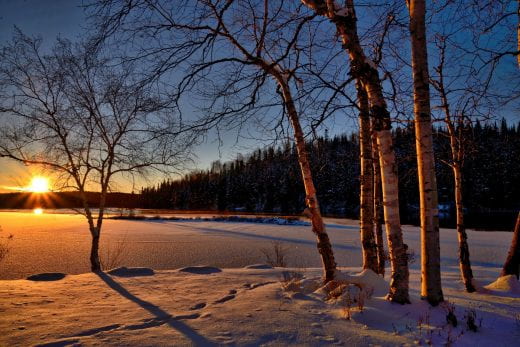 RECENTLY, I WAS LOOKING FOR INFORMATION ABOUT THE WINTER SOLSTICE …. you know, when we have the shortest day and longest night of the year… and in my search, was reminded of a treasure trove of short (1-minute) audio reports on all things weather related in Weather Wonders. Recent snippets are about weather warnings (as in what are they?), whiteouts, heating degree days and more. And yes, I found one on the winter solstice. We live in a state where it’s a good idea to pay attention to the weather and meteorological events! Unlike conditions in some other parts of the country, weather is always changing here! By the way, this year’s winter solstice is Dec. 21. So, every day after that we can look forward to a little more daylight … until, of course, the SUMMER SOLSTICE in June!
RECENTLY, I WAS LOOKING FOR INFORMATION ABOUT THE WINTER SOLSTICE …. you know, when we have the shortest day and longest night of the year… and in my search, was reminded of a treasure trove of short (1-minute) audio reports on all things weather related in Weather Wonders. Recent snippets are about weather warnings (as in what are they?), whiteouts, heating degree days and more. And yes, I found one on the winter solstice. We live in a state where it’s a good idea to pay attention to the weather and meteorological events! Unlike conditions in some other parts of the country, weather is always changing here! By the way, this year’s winter solstice is Dec. 21. So, every day after that we can look forward to a little more daylight … until, of course, the SUMMER SOLSTICE in June!
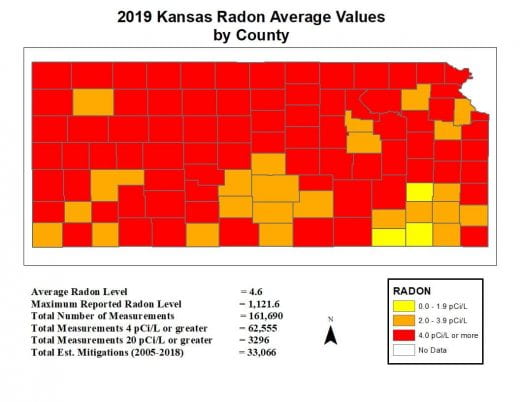 BECAUSE OF ITS ODORLESS, TASTELESS AND COLORLESS WAYS, RADON CAN BE A SILENT KILLER AND unfortunately, it’s fairly prevalent in Kansas soils. The radioactive gas that occurs naturally in some soils is the No. 1 cause of lung cancer in non-smokers. It claims the lives of about 21,000 Americans every year, according to the EPA. But there are ways to test for it and mitigate it. January is Kansas Radon Action Month. Learn more from the Kansas Radon Program based at K-State and check with your local K-State Research and Extension office (click on your county for location/contact information) – many of them have radon test kits available for a nominal cost.
BECAUSE OF ITS ODORLESS, TASTELESS AND COLORLESS WAYS, RADON CAN BE A SILENT KILLER AND unfortunately, it’s fairly prevalent in Kansas soils. The radioactive gas that occurs naturally in some soils is the No. 1 cause of lung cancer in non-smokers. It claims the lives of about 21,000 Americans every year, according to the EPA. But there are ways to test for it and mitigate it. January is Kansas Radon Action Month. Learn more from the Kansas Radon Program based at K-State and check with your local K-State Research and Extension office (click on your county for location/contact information) – many of them have radon test kits available for a nominal cost.
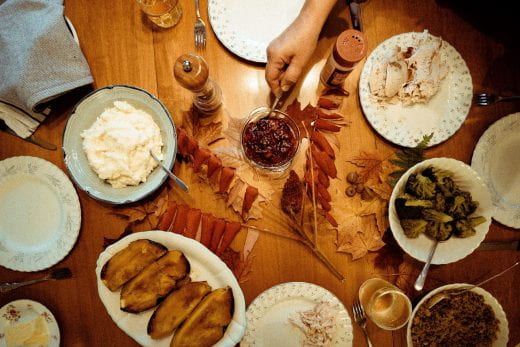 WE ARE JUST DAYS FROM THE WINTER HOLIDAYS and for many of us (and especially procrastinators like me :-0), that means crunch time for shopping, wrapping, meal planning and more. So, when I saw there were tips on Reducing the Hassle of Holiday Food Prep, it spoke to me. I won’t be as busy with this as some of my family members this year, but hey, I’m going to help 😊!!!!! Whether you’re hosting a crowd or just looking for suggestions about pacing yourself to reduce stress anytime you’re in the kitchen, take a look. Another option is to listen in to a short audio feature on a related topic.
WE ARE JUST DAYS FROM THE WINTER HOLIDAYS and for many of us (and especially procrastinators like me :-0), that means crunch time for shopping, wrapping, meal planning and more. So, when I saw there were tips on Reducing the Hassle of Holiday Food Prep, it spoke to me. I won’t be as busy with this as some of my family members this year, but hey, I’m going to help 😊!!!!! Whether you’re hosting a crowd or just looking for suggestions about pacing yourself to reduce stress anytime you’re in the kitchen, take a look. Another option is to listen in to a short audio feature on a related topic.
Better Farming, Ranching and Gardening
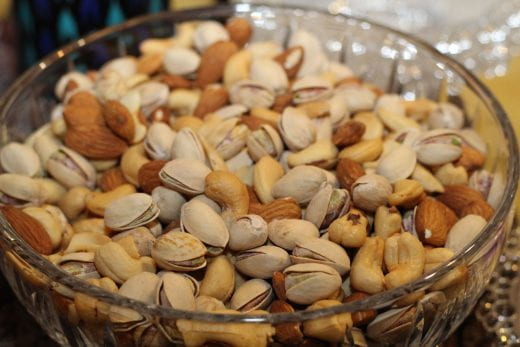 GOING NUTS: TIPS ON THE BEST WAYS TO KEEP THOSE HOLIDAY pecans, walnuts and other nutty treats fresh and good tasting are part of the Dec. 17, 2019 Horticulture Newsletter. You really can freeze them! Plus, there are sections on environmentally friendly ways of disposing of real Christmas trees and how to keep fruit from gift baskets fresh as long as possible. For some reason those luscious oranges, grapefruit and pears taste even better in the midst of the cold, dark days of winter. Sort of like a promise that summer will come again.
GOING NUTS: TIPS ON THE BEST WAYS TO KEEP THOSE HOLIDAY pecans, walnuts and other nutty treats fresh and good tasting are part of the Dec. 17, 2019 Horticulture Newsletter. You really can freeze them! Plus, there are sections on environmentally friendly ways of disposing of real Christmas trees and how to keep fruit from gift baskets fresh as long as possible. For some reason those luscious oranges, grapefruit and pears taste even better in the midst of the cold, dark days of winter. Sort of like a promise that summer will come again.
 THIS YEAR’S EXCEPTIONALLY WET GROWING SEASON made it more difficult than usual to bale hay without moisture, resulting in moldy hay in some cases. Horses, particularly, are more sensitive to mold than some livestock, but cattle and people can be affected, too. If you’re faced with decisions about feeding moldy hay and other livestock production considerations, check out livestock and forage articles on this and other related topics.
THIS YEAR’S EXCEPTIONALLY WET GROWING SEASON made it more difficult than usual to bale hay without moisture, resulting in moldy hay in some cases. Horses, particularly, are more sensitive to mold than some livestock, but cattle and people can be affected, too. If you’re faced with decisions about feeding moldy hay and other livestock production considerations, check out livestock and forage articles on this and other related topics.
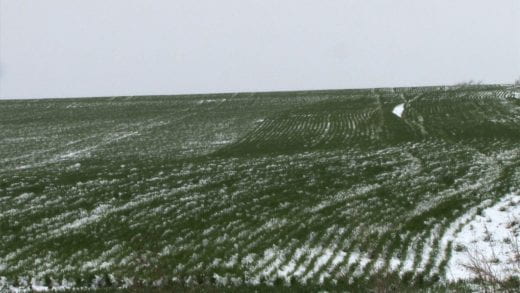 MOST OF THE STATE’S WINTER WHEAT CROP HAS EMERGED BUT IS NOT COMING ALONG as is typical at this point of the season. Below normal precipitation and temperatures in many areas, especially central and western Kansas, impeded emergence rates and in some areas where the crop emerged, fields are in poor shape. In its last weekly progress report of the 2019 growing season on Dec. 9, USDA said 94% of Kansas wheat had emerged. Its condition was rated 24% poor to very poor, 38% fair, 35% good and 3% excellent. Take a look at an Agronomy eUpdate on this season’s crop and what producers should watch for. At stake is a Kansas crop that in 2018 alone was worth more than $1.3 billion. Typically, about half of our state’s wheat is exported to other countries.
MOST OF THE STATE’S WINTER WHEAT CROP HAS EMERGED BUT IS NOT COMING ALONG as is typical at this point of the season. Below normal precipitation and temperatures in many areas, especially central and western Kansas, impeded emergence rates and in some areas where the crop emerged, fields are in poor shape. In its last weekly progress report of the 2019 growing season on Dec. 9, USDA said 94% of Kansas wheat had emerged. Its condition was rated 24% poor to very poor, 38% fair, 35% good and 3% excellent. Take a look at an Agronomy eUpdate on this season’s crop and what producers should watch for. At stake is a Kansas crop that in 2018 alone was worth more than $1.3 billion. Typically, about half of our state’s wheat is exported to other countries.
_
For more resources and activities, contact the K-State Research and Extension office in your area. Check out our other blogs and subscribe to our weekly emails here: https://www.ksre.k-state.edu/news/blogs/

